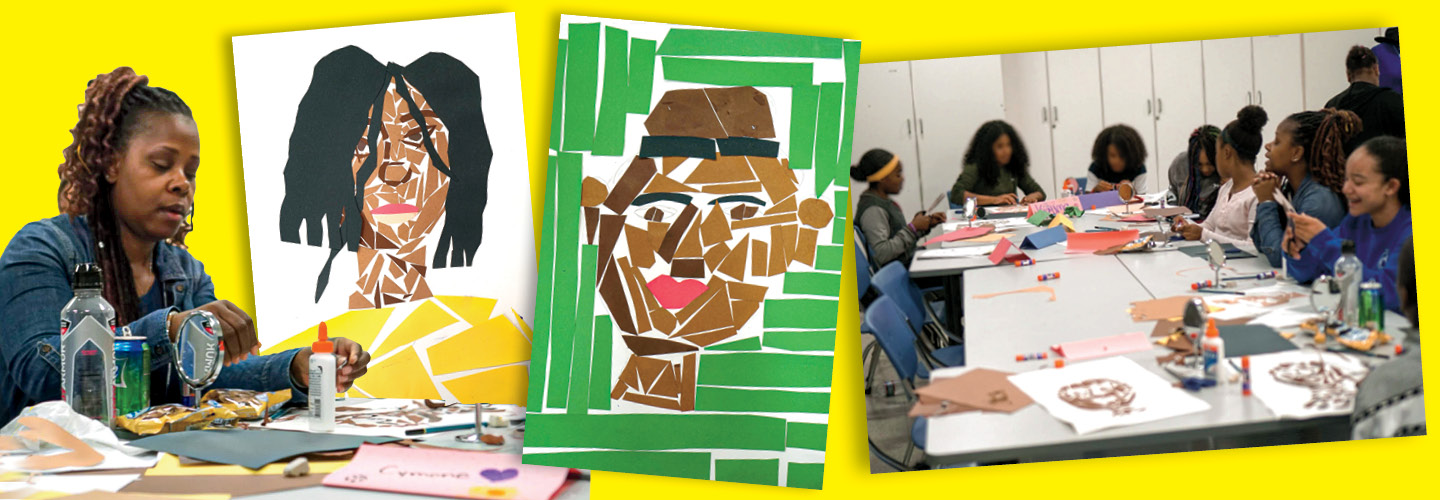Images courtesy of Rebecca Rice.
Dr. Louvenia Jackson
Scholastic Art: What is your job?
LJ: I am an art therapist. Art therapy differs from talk therapy in that we use art, rather than verbal engagement, as the main method for working through therapeutic issues with clients. I’ve worked with clients in residential treatment, schools, prisons, out-patient clinics, domestic violence centers, and other clinical and community-based places. I am also an assistant professor of marital and family therapy with a specialization in art therapy at Loyola Marymount University in California.
SA: What kinds of materials do you use during a therapy session?
LJ: There is no formula that dictates what medium to use and when. It all depends on the client and the work we are doing. Typically, an art therapist will have all the traditional media—such as colored pencils, paints, and modeling clay. But we will use any medium that is helpful to the client. Anything that can be used to express yourself and share your emotions, an art therapist might use in some way.
SA: How do you analyze a client’s art?
LJ: One of the misconceptions about art therapy is that therapists have a magical ability to interpret people’s art, or that a certain type of drawing always means the same thing—such as anger—no matter who draws it. But that’s not how it works. If I were to try to tell a client what their artwork means, I would impede my client from being able to tell their own story. Instead, I am present with the client, and I allow them to tell me what they are creating and what it means to them.
SA: Why did you decide to become an art therapist?
LJ: I have always been a creative person, but I thought I needed to focus on a business path in order to get a job after college. However, I was very unhappy with my studies my freshman year, and after talking to my aunt—who said, “Why aren’t you making art? You’re so good at it!”—I changed my major to fine arts. Eventually, I discovered the field of art therapy, which is a perfect fit for me as it allows me to be creative while also connecting with people and using art in a communal way.

